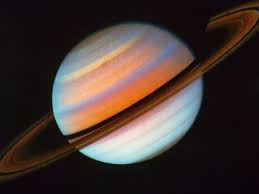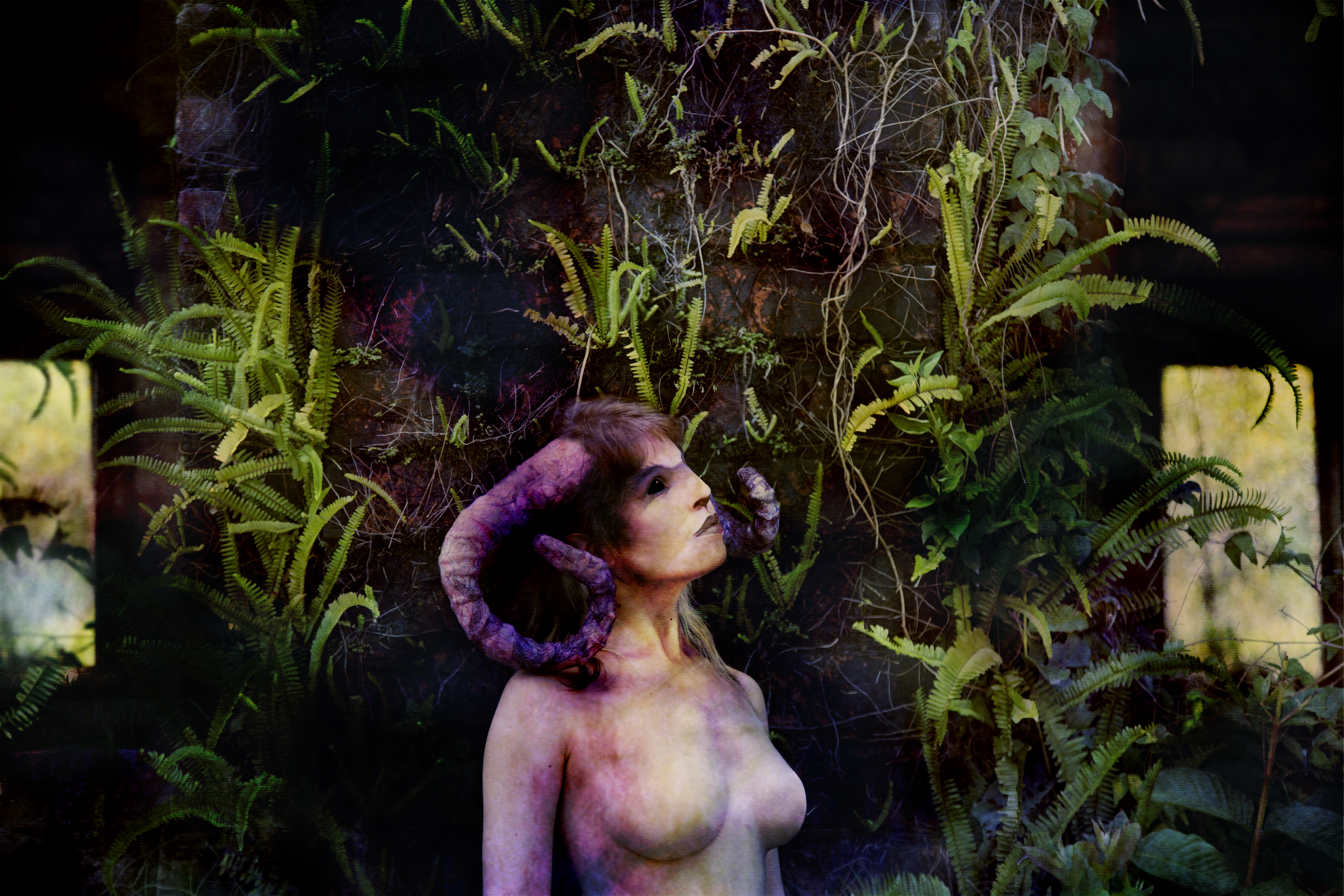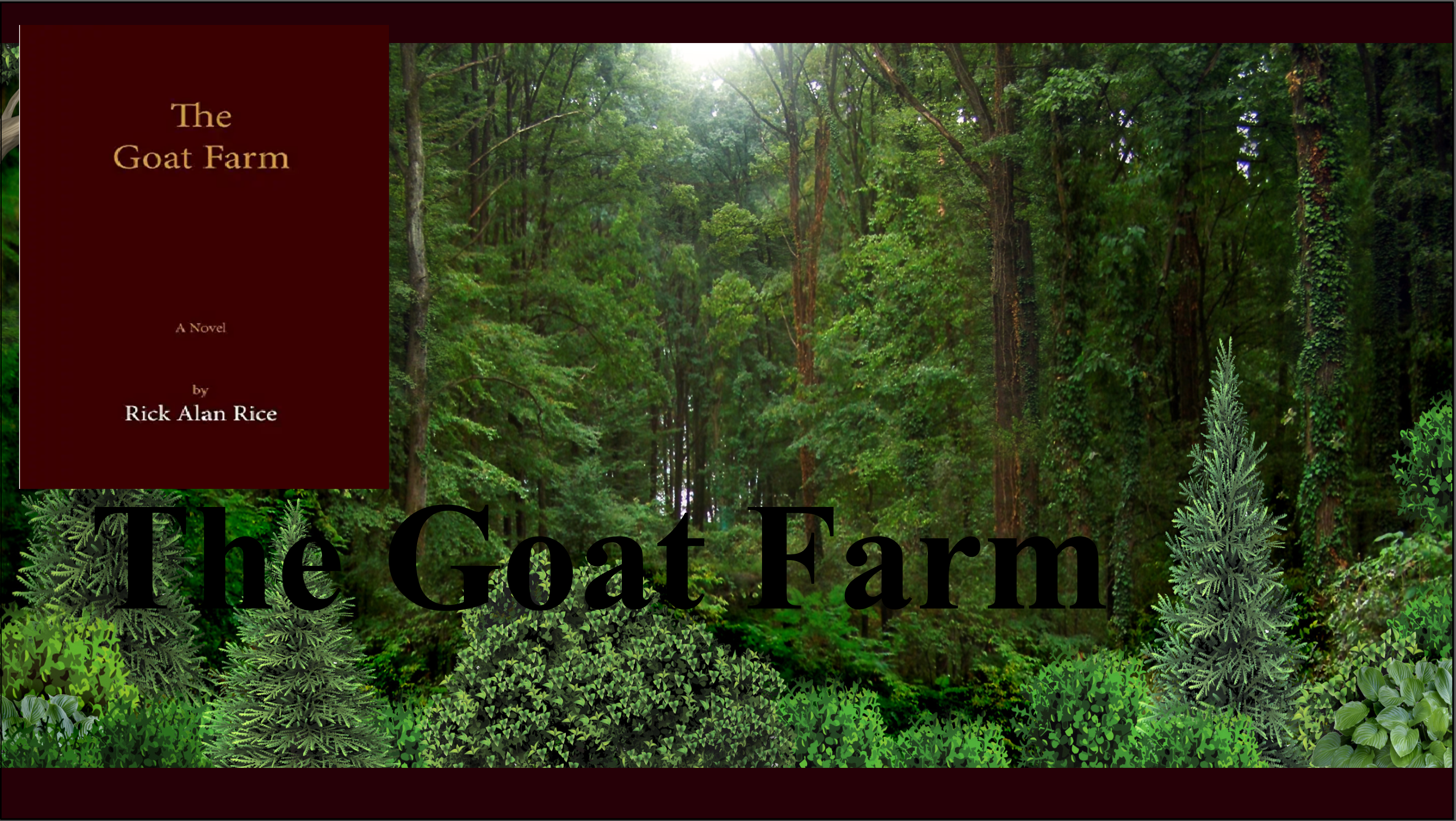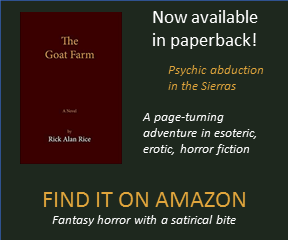
What is Going on Here?
Some intelligent entity or force, emanating from the planet Saturn, is influencing life on planet Earth as it has since humankind has existed on planet Earth. These are the forces that animated the Greek and Roman deity Pan. The rings of Saturn are said to be organized by the Pandean Ringlet, which mirrors the odd orbit of the moon Pan.
While Pan is a corporeal form in the real world, the energies beaming down from Saturn facilitate the creation of entities on the Goat Farm that are energetic forms made real from the thoughts of a certain type of human woman who is literally attracted to the place. Through her mental, emotional, and sexual energies, these spirits enter into the world, where they multiply and spread.
They are Satyrs whose purpose is to liberate the spirits of humankind, to ignite their passions and energies, primarily using sexual desire as the trigger. They are the natural expression of energy that Aleister Crowley attempted to tap into through his sex-magick rituals. (Crowley made contact with energies from another dimension, not from within our solar system.)
Who are the Fauns?

The fauns we meet in this story are female, making them of the more modern Roman variety than the Greek, who were male. The fauns are corporeal beings who are associated with the underworld, and with special places where the energies from above and below come together. The fauns are Earthly managers, their purpose being to facilitate this unique exchange of energies – a creation energy intermingling with a custodial form. They are the organizers of the “rings of Saturn” as they are represented on Earth by the rock formations at The Goat Farm. Around Saturn, those rings are organized to broadcast a message coming from within the ringed planet.
Creative Chaos
Saturn has always been associated with influence and enlightenment on planet Earth. Creative forces challenge existing structures, and the result is creative disruption, chaos. It is through this process of creative destruction (see Silicon Valley’s motto) that human progress occurs. The creative chaos channeled through the Goat Farm cannot come from the energies of a young woman. Only an older mother figure can properly serve as the generator of these earthly spirits influenced from above.
Why the Mature Woman?
That the reader would ask this question is something reflective of human perspective, and that isn’t the guiding force in this story. The guiding force is an energy that not human, but rather is timeless, ageless, and what it responds to in the human women who are selected for the task of bringing order from chaos is their unique energy, not their physical forms. There is something quite different in the energy of a mature human from those of the young. Women don’t come into their sexual maturity until much later in life, long after their superficial youthful beauty has faded. The Saturn energy doesn’t respond to a human sense of physical beauty, associated with youth, but rather responds to their evolving feminine energy. The women who are called to the Goat Farm are women who have never given birth to children. They are like energized batteries, building their charge for decades, bottled up within themselves. During their lifetimes, until they become freed at The Goat Farm (and places like it), these confined energies present themselves as anxiety, fear, and depression. At The Goat Farm, these women are set free, and the power of their energetic release is creation. The world around them comes alive. They begin producing energetic forms – the Satyrs – who go out into the world and energize others. Their creations seduce and multiply additional spirits in human form, who are encouraged to creativity and to make contributions in the world, to breakdown human-created barriers to knowledge and understanding. They create creative chaos.
How Could a 65-Year Old Woman Be in this Role?
Why is Joanna so beautiful at her age, so attractive? It is important to note that all of this point of view – that Joanna becomes more and more beautiful in her old age, until finally Ben comes to see her as “Helen of Troy” – is reported by Ben and Joanna herself. Are they trustworthy observers, or are they simply under the spell of The Goat Farm?
Inner Beauty
Joanna becomes more beautiful because she is an unleashed spirit, growing more beautiful with her evolving sense of comfort with herself. She is seduced by the energies of the stone meadow, which has caused her to relax and allow herself to accept the way she actually feels about herself inside – that she is young, beautiful, filled with energy, and is sexually desirable.
Outer Beauty
Joanna is a nature project, and the elemental forces at The Goat Farm feed her, literally in the case of her honey fixation. She is being built-up to handle the magnitude of the challenge ahead. She is going to need the strength and energy of a super woman to manage this goat farm all by herself, and the farm conditions her in various ways. She does becomes more physically fit because she is doing hard labor, that her husband largely won’t help her with, and her nutritional intake is being manipulated to create her super form.
Why the Goats
In myths all around the world the goat is associated with wilderness. The Greco-Roman gods who inhabited the forest depths and remote mountaintops roamed the backlands with goat companions, and appeared in the Pan, a sculpture by Wendy Froudform of goat-men themselves: Pan, Silvanus, Faunus, Bacchus, Dionysis, goat lovers all. Female goats were sacred to Artemis/Diana, goddess of female independence and the hunt, and goat milk was a common offering with which to honor or propitiate her. In Sumerian myth, goats belonged to Marduk, the ancient god of magic and patron deity of Babylon, and were regarded as potent, uncanny beings due to this association. Agni, the Vedic god of fire, rides a chariot pulled by goats in some Hindu tales; as does Thor, the god of thunder, strength, and virility in Scandinavian myth. Thor's goats, called Tanngrisnir and Tanngnjóstr, are slaughtered and feasted on each night, but when their bones are carefully gathered together these magical goats return to life.
"From sunrise to sunset, I was in the forest, sometimes far from the house, with my goat who watched me as a mother does a child," wrote Mexican painter Diego Rivera (in My Art, My Life). "All the animals in the forest became my friends, even dangerous and poisonous ones. Thanks to my goat-mother and my Indian nurse, I have always enjoyed the trust of animals -- a precious gift. I still love animals infinitely more than human beings.“
The symbolism attached to goats varies a great deal around the world. In some places, they represent gentleness, endurance, spiritual purity, and sacrifice; in others, independence, lust, virility, fertility, The Gidleigh Goat by David Wyattcreative vigor, and stubbornness. Those born in the Chinese year of the goat are said to be shy, creative, and prone to perfectionism, while in Persian myth, goats symbolize leadership, forcefulness, and strength. This range reflects the nature of goats themselves. Though they were among the earliest of animals to be domesticated by humankind, they are also among the quickest to return to a feral state when opportunity arises. In old stories ranging from Aesop's Fables to fairy tales and nursery rhymes, goats are cannier than sheep (think, for example, of the clever Three Billy Goats Gruff), and though they're generally not full Trickster characters, they tend to retain an edge of Trickster's wiliness and wildness. Even in more recent stories for children -- such as Heidi, the classic by Johanna Spyri -- they represent our connection to nature and life lived in tune with nature's cycles...carrying the echo of goat-legged Pan wherever they roam the mountains, and wherever we follow.
See Folklore of Goats.
What is Willie?
Willie is the voice in Joanna’s head, the one who voices the things she thinks and feels. It is through him that she little-by-little comes to understand herself. He is an entity that also appeared to Lita Breedlove, and probably those women who came before. He presents as an innocent youth, but he is not what he seems. Willie has another role. He scares people, like Cooter Riley and Guita. Through intimidating actions he scares away any influence that might detour Joanna from her reason for being at the Goat Farm. He threatens Guita and insults her, making her presence on the Goat Farm so challenging that she will just stay away. He senses that her energy runs counter to everything that Joanna has been placed on the Goat Farm to do. Willie terrorizes Cooter Riley with bizarre drawings that he knows work on Cooter’s imagination. He has practically paralyzed Cooter to the extent that the big man is afraid to leave his home. He had a nice dog, back in the day before the Goat Farm got into his life. Now he has vicious protectors. Willie is also the right-hand man – or kid – of another entity that has been conjured up out of Joanna’s imagination: Baphomet.
What is Baphomet?
Baphomet is the spiritual manifestation of who Joanna will become. Half man-half woman, Baphomet represents the fully realized form of female and male energy combined, of transformation to perfect balance, perfect equilibrium. This is the calming of chaos on Earth, probably a window into the developing human form.
Baphomet is the enlightened other within Joanna, and within all humans who are given this gift of inner sight.
Who is Silenius Faunus?
He is Pan, or at least a Pan. There has been only the one, and yet he seems legion.
You’ll notice that he never removes his hat, even while having sex with Bert Grimfold, for to do so would reveal his horns.
From Wikipedia: In fable Faunus appears as an old king of Latium, grandson of Saturnus, son of Picus, and father of Latinus by the nymph Marica (who was also sometimes Faunus' mother). After his death he is raised to the position of a tutelary deity of the land, for his many services to agriculture and cattle-breeding. A goddess of like attributes, called Fauna and Fatua, was associated in his worship. She was regarded as his daughter, wife, or sister. The female deity Bona Dea was often equated with Fauna. As Pan was accompanied by the Paniskoi, or little Pans, so the existence of many Fauni was assumed besides the chief Faunus. Fauns are place-spirits (genii) of untamed woodland. Educated, Hellenizing Romans connected their fauns with the Greek satyrs, who were wild and orgiastic drunken followers of Dionysus, with a distinct origin. In this story, Silenius Faunus wonders the world, establishing the physical connections between the animating forces of Saturn, and the human population. He recruits people like Bert Grimfold, the wannabe mining engineer who he turns into the property manager of the Goat Farm.
On Living Forever
All of the entities on the Goat Farm are immortal, in one way or another, and those humans who give themselves to the Goat Farm also experience an eternal life. This may be a curse. Bert Grimfold becomes imprisoned to his job, growing ever older, living as a pariah, an outsider, never being released from his bond. It is unclear what happens to the men who come to the Goat Farm, who are soon taken by the female fauns to the underworld.
Why Did the Forest Stranger Stop Coming for Lita Breedlove?
She just ran out of the energy required to conjure him up. Though the elementals have optimized her capacities for maintaining the Goat Farm, she is a human being and humans have limitations.
Bert Grimfold shows up at the Goat Farm when the message goes out that the place needs to transition to a new owner. That new owner operates the place, and generates all the little Pans, until she then runs out of gas and must be replaced. Transitions to new ownership have occurred in 33-year cycles. When that transition cycle has slipped outside of that 33-year range, problems have ensued. The magic stops and bad things happen, like baby goats born into the world with horrible deformities. This happened with Lita Breedlove, with disastrous results.
Joanna inherits a Goat Farm in disarray, because Lita Breedlove had been unwilling to give it up, to accept her fate, which was in the underworld where the faun girls take her, as they did her husband before her.
It is unknown what happens to people down below, where the goblins go, though a Nevada City psychic suggests that people who go there are not dead.
What's With the Red Goat Skull?
The red skull speaks to its owner when they are outside of the stone meadow. It hangs in the home as a constant transmitter of thought and is key to the seduction of the new owner. Joanna will make a mate for this randy goat skull that she has inherited, her “Whore of Baphomet”. It is a sign that she is marrying into this strange arrangement with this “other” – the Pan energy from Saturn.
Lita Breedlove
Lita Breedlove had been in her 50s when she and her husband purchased the Goat Farm.
Her husband had been an abusive man whose interest in the goat farm was purely practical. He had been a farmer his entire life and he intended to raise a herd of goats on this farm that had previously been used for that purpose. He was mean to his wife and to his animals and the elementals immediately turned on him. They lured him into the lagoon, where he disappeared forever.
With him gone, and left on her own, Lita had struggled to live alone on the farm and to keep the place alive. She didn’t have the energy for it and eventually arranged with her neighbor Cooter Riley to grow marijuana. The proceeds from that were to sustain the goat farm, but the partnership didn’t work out. As Cooter Riley backed out, the energy on the Goat Farm began to go wrong. Goats were born deformed and Lita Breedlove took to killing them, putting their horrible, disfigured forms out of their misery. She used an axe and with every young goat she killed her stock with the elementals plummeted. The Goat Farm began to fall into disrepair.
Mrs. Breedlove had experienced all the same sexual impulses and experiences in the meadow that Joanna had experienced, but as conditions on the farm worsened, the elementals began to reject her. The forest stranger, who had taken her with all the same enthusiasm that he would later take Joanna, had stopped coming to the meadow. And with the loss of her husband, the end of her business relationship with Cooter Riley, and the end of the carnal connection she had established with the forest stranger, Lita began to lose her mind. She became desperately poor. Her goats all died and she took to surviving on their rotting carcasses.
Growing more disoriented, more disconnected from reality, she would wonder around her farm at night, often naked, hoping against hope that the forest stranger would come back to her again, to breed new life into the farm, but her inner light had faded, the old negative thoughts had rushed back in to her life, and she would never again know any kind of a connection to the forest stranger.
As conditions on the Goat Farm deteriorated, so conditions on the planet were degraded. A culture of nature and life was replaced by a culture of death.
Baphomet
The elementals – Willie and his family – are all manifestations of natural energy – bridges between the physical and the ethereal realms.
Their purpose is to channel the natural energies of the cosmos – particularly energies emanating from the planet Saturn – that animate all things on planet Earth.
Their purpose is to nurture the goat farm because it is a portal for a sustaining life energy, but to make this connection between the physical and ethereal realms work requires a catalyst, a human repeater station. The elementals cannot break through to achieve human contact and intervention in worldly affairs without this special person. It must be a woman, a giver of life, and it must be someone willing to sacrifice her very essence to this higher purpose.
Mind you, the energies of the universe are neither positively or negatively charged, but rather are a steady current that can create destruction as surely as creation. It is a neutral form, which is why the elementals are tasked with controlling and directing it.
But are the elementals a positive or a negative force? Again, they are neither, but rather are an extension of nature. They are responsible for the connection, not the direction. That comes from a female host, a mother figure – Lita Breedlove before her, and now Joanna.
Joanna learns this by visiting a psychic in Nevada City.
The Realtor
Just when things for Lita Breedlove are at their lowest point on the Goat Farm, the man who sold the Breedloves the property suddenly shows up on the farm unannounced.
He finds Lita standing naked on the deck overlooking the lagoon. “I understand things are not going so well,” he said, to which she replied “He won’t have me anymore. I’m of no value to him, or anybody. I have no money, no husband. The kids are all gone. I believe I’m finished.”
The realtor had arranged the sale of the property.
He made a strange request. He told Lita Breedlove that he wanted her to find the horned skull of a goat, and he wanted her to paint it with a red lacquer, and to hang it on a wall in her home.
Not long after Lita Breedlove hung the red-painted skull, the realtor told her that he would have a buyer coming soon. He saw her in a vision. She would be a petite woman, very youthful in appearance but with the wisdom of age, and she would have the money Lita Breedlove so badly needed, but more importantly she would have the essence the Goat Farm needed – indeed, that the world so badly needed.
The Realtor is an agent of the supernatural, another human caught in a web of servitude to a higher power, whose purpose is to assure the continuance of the Goat Farm



